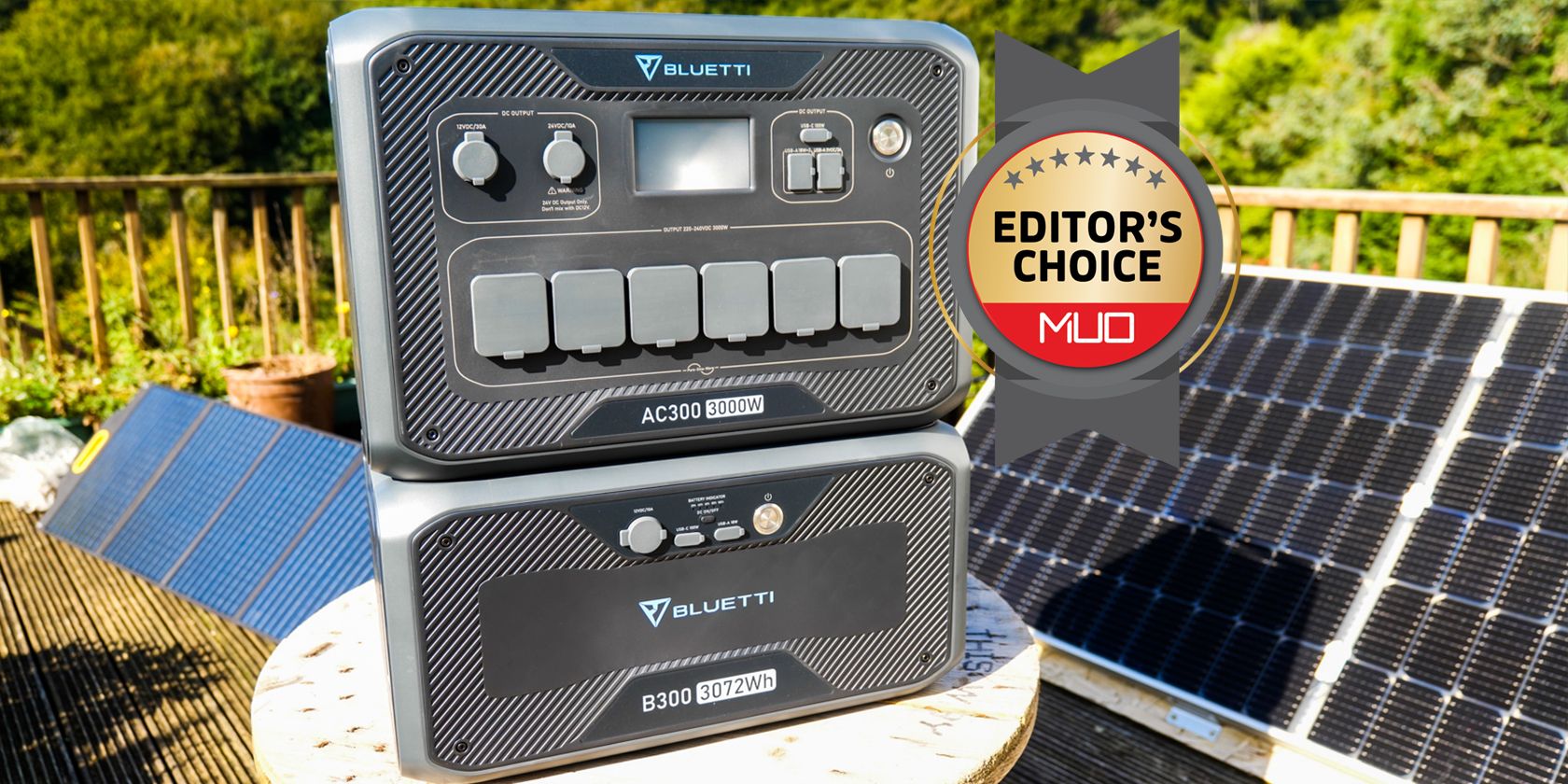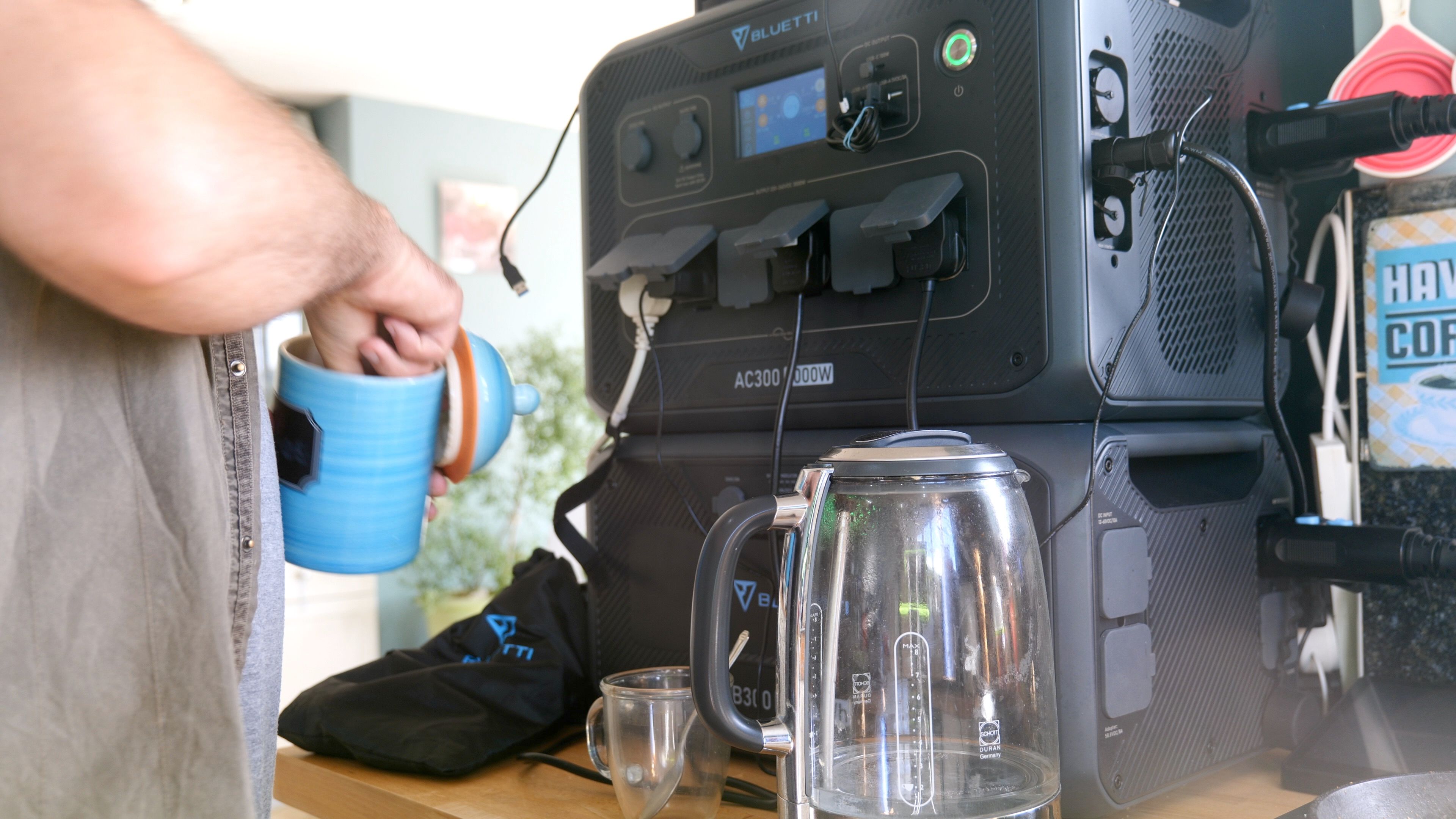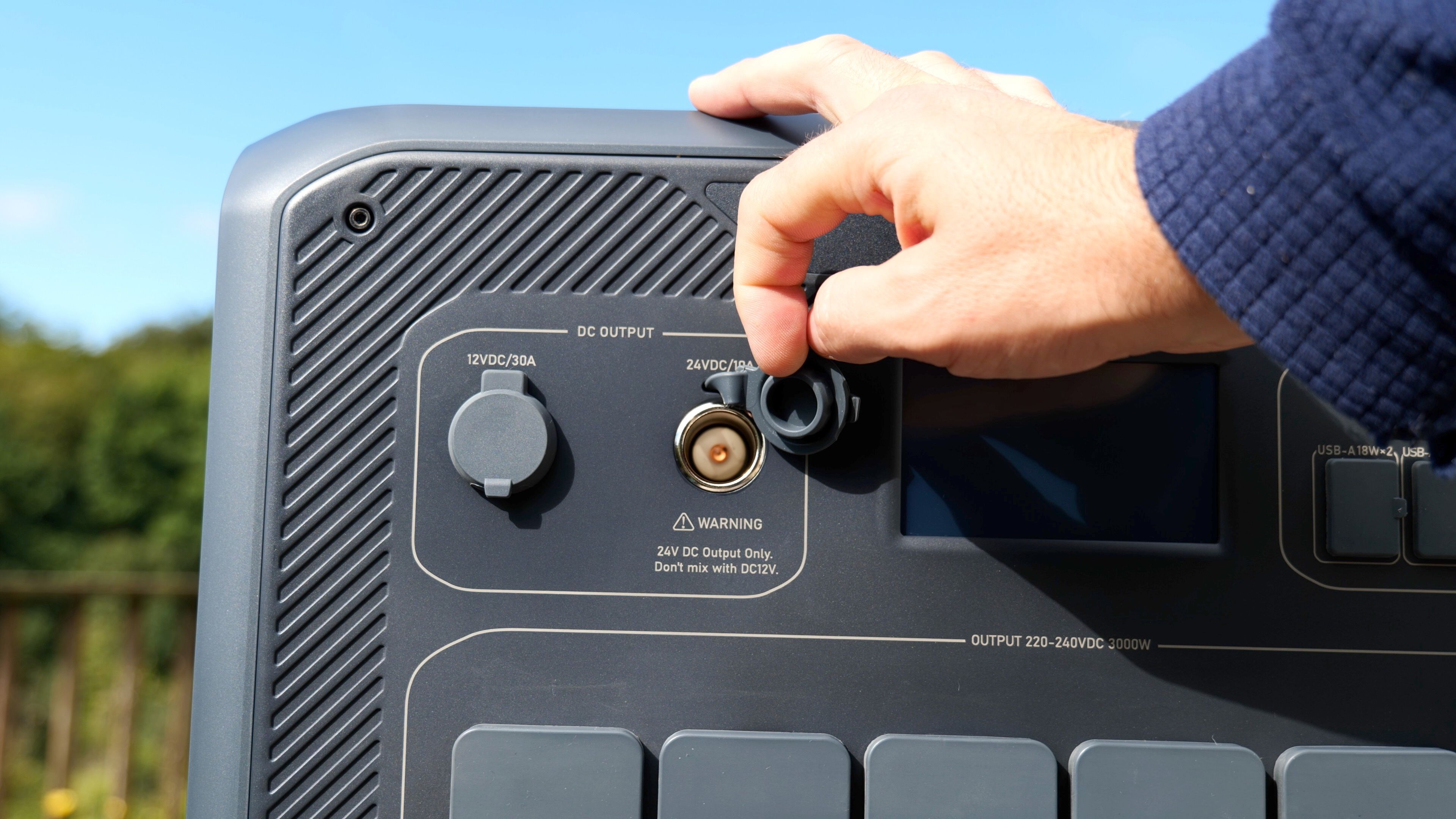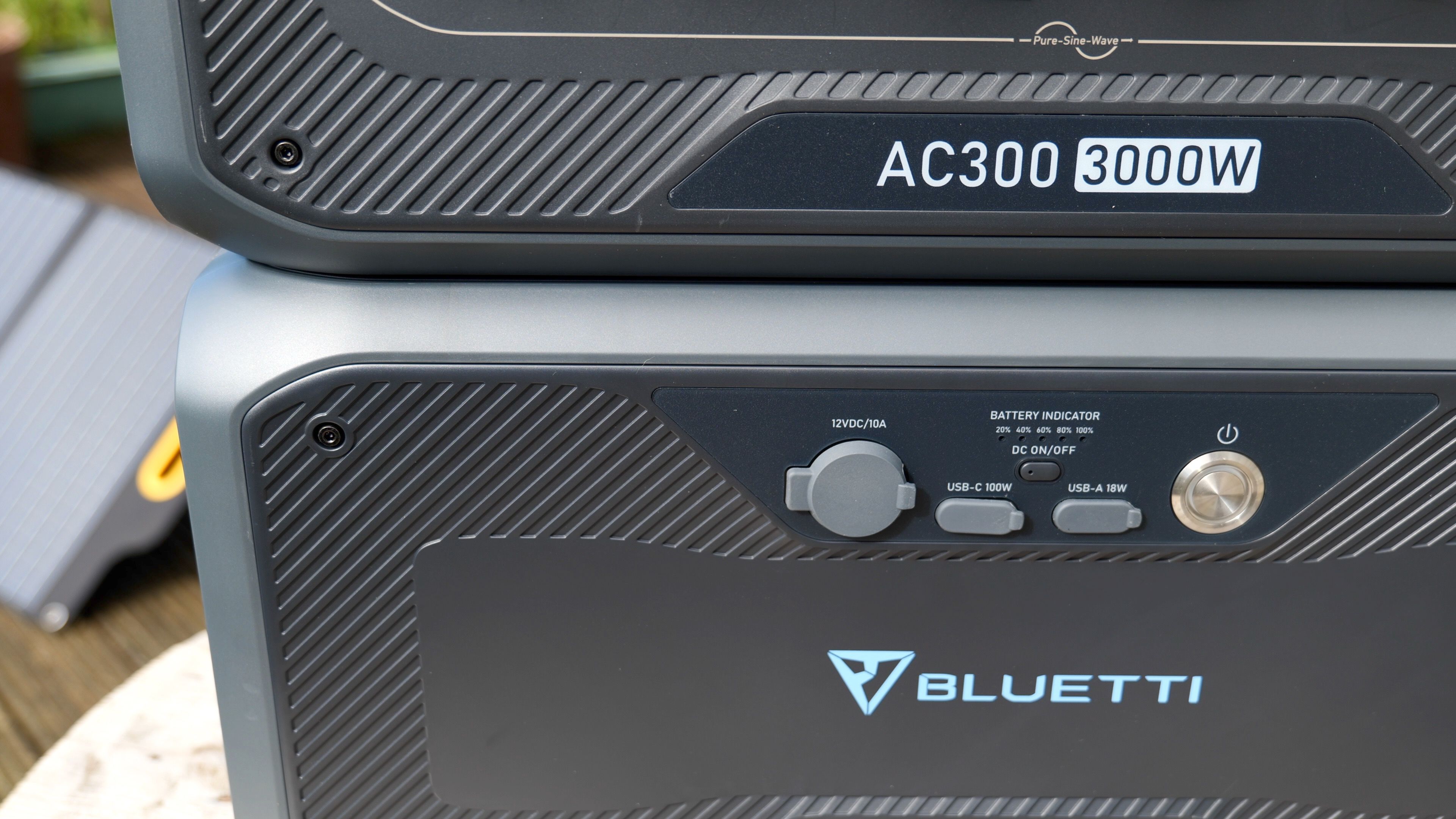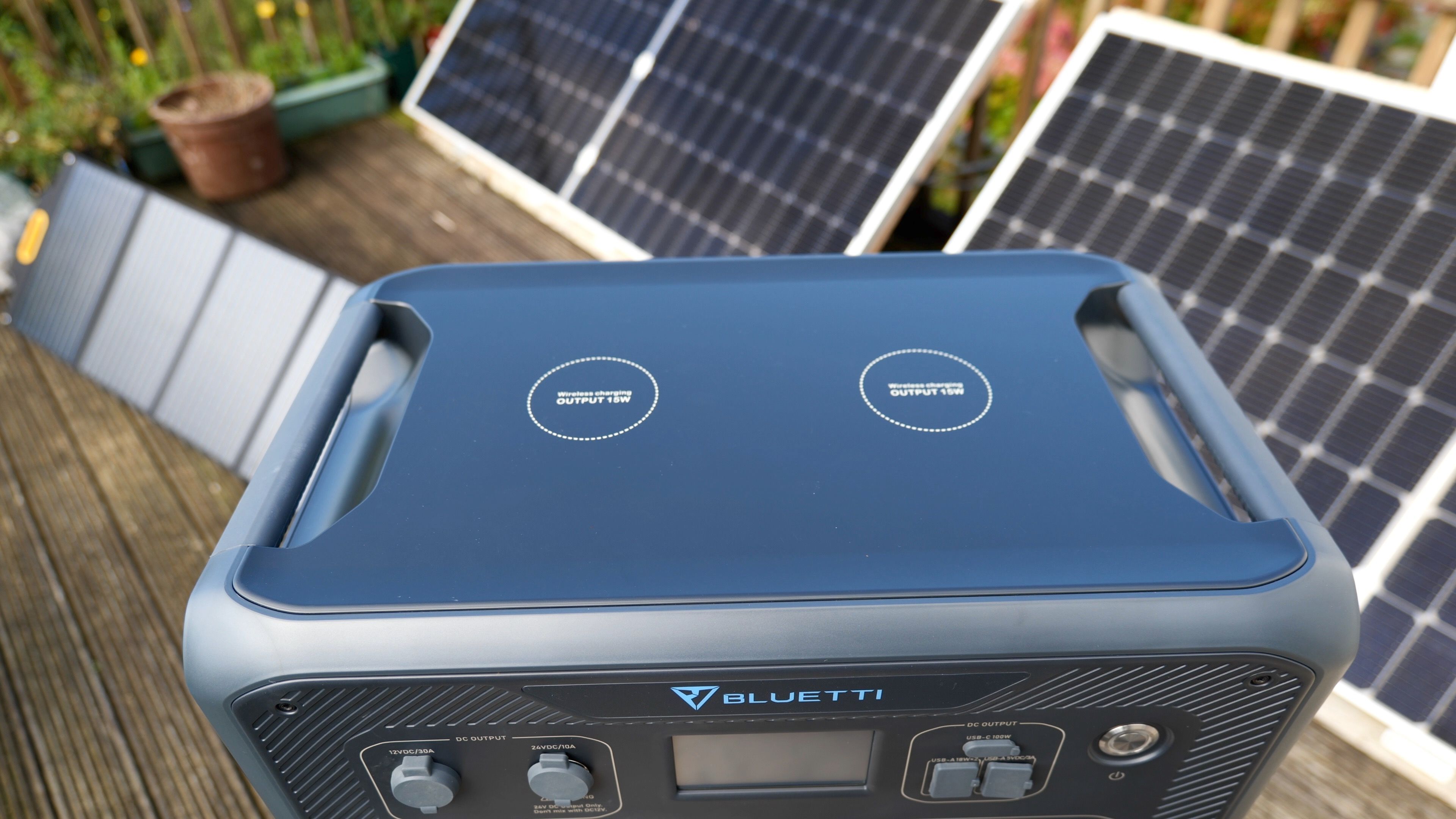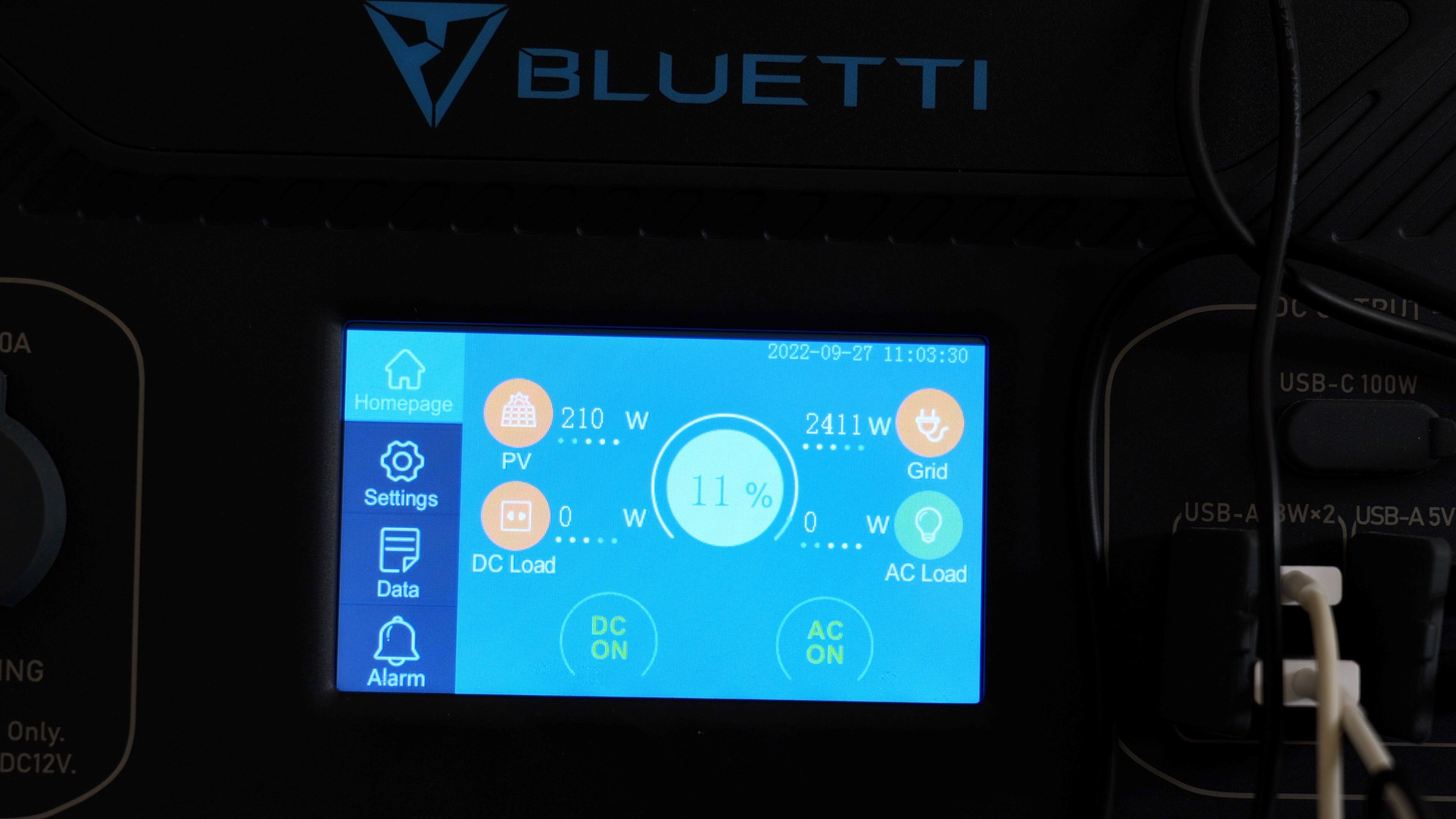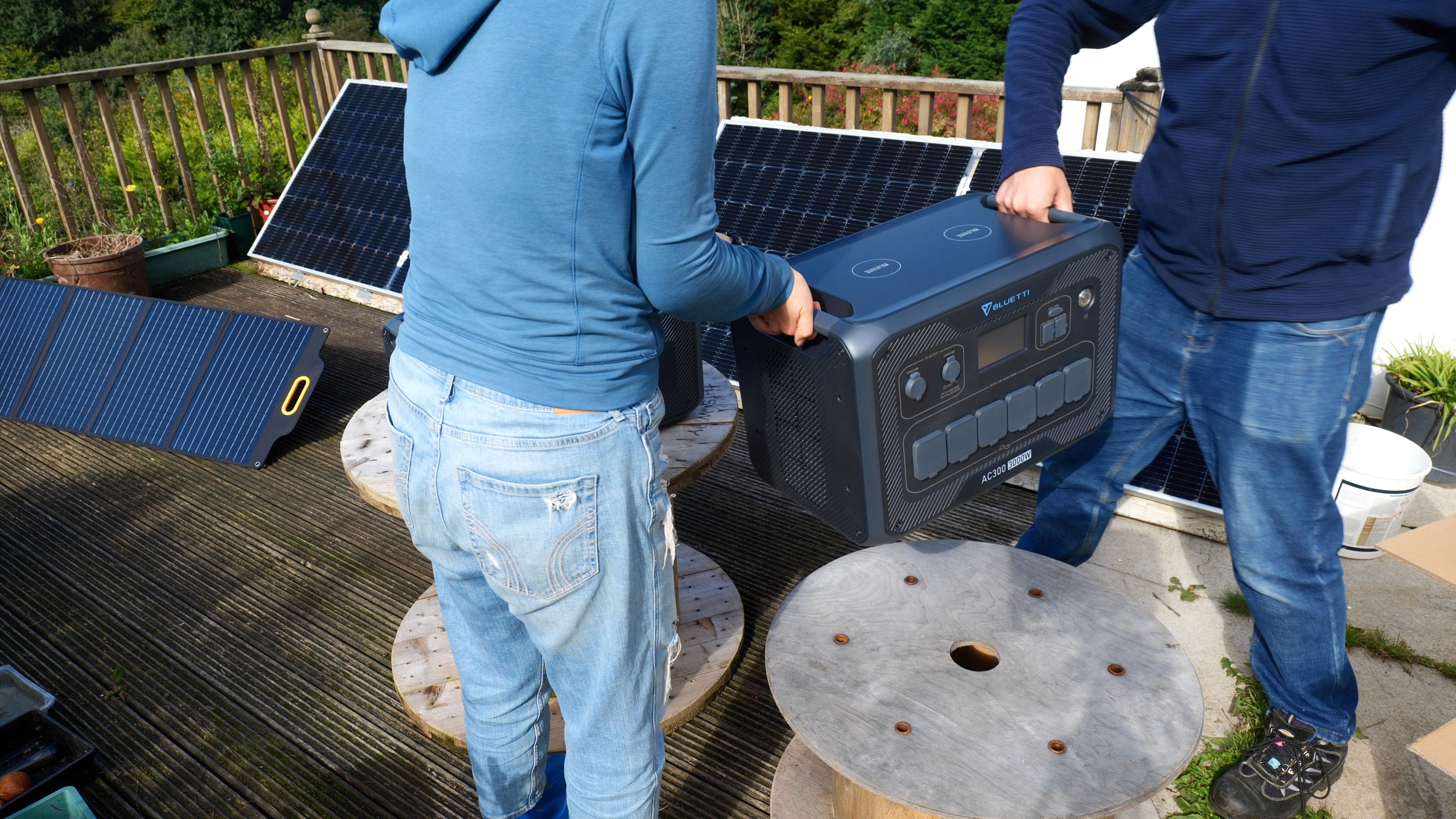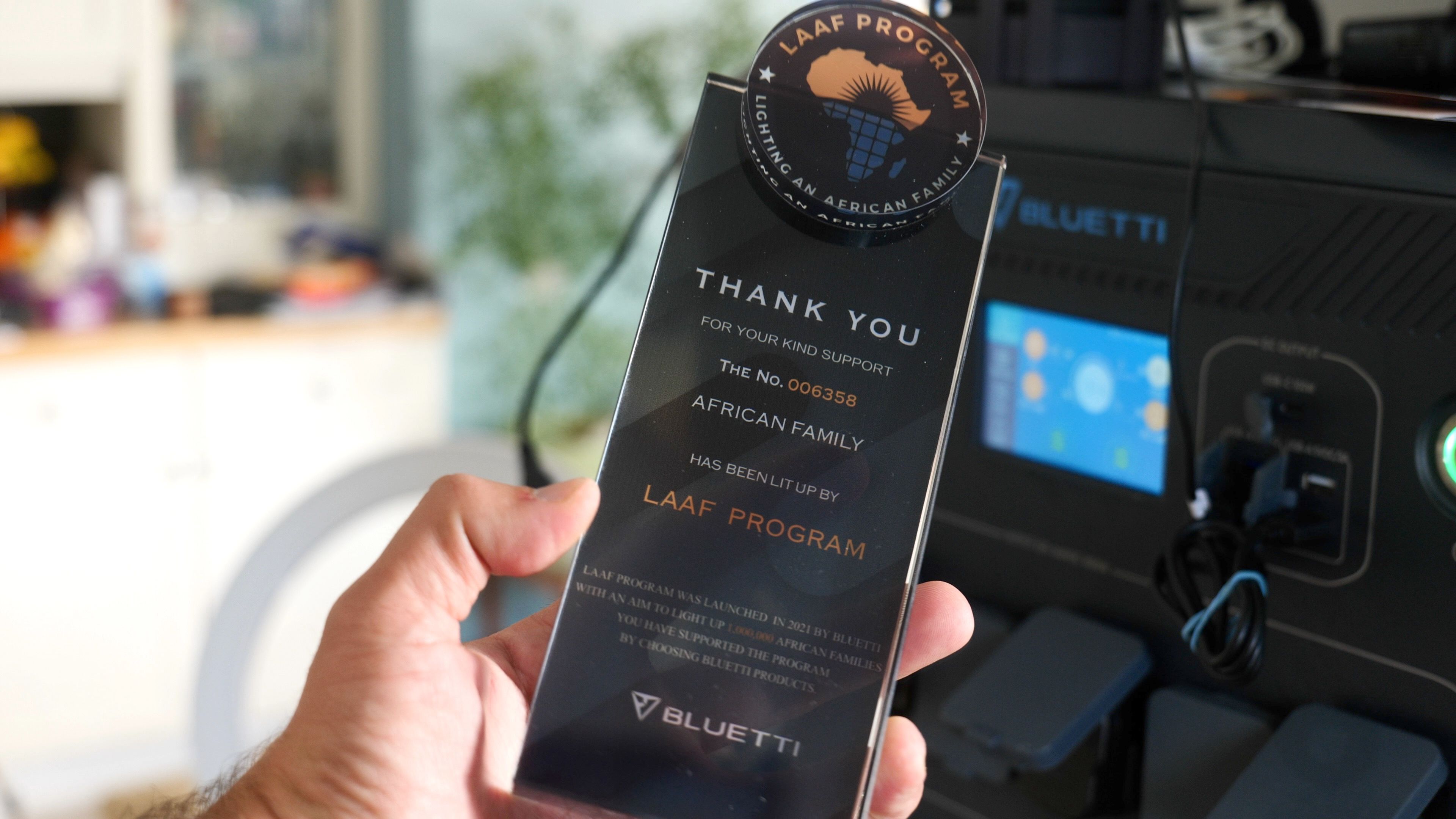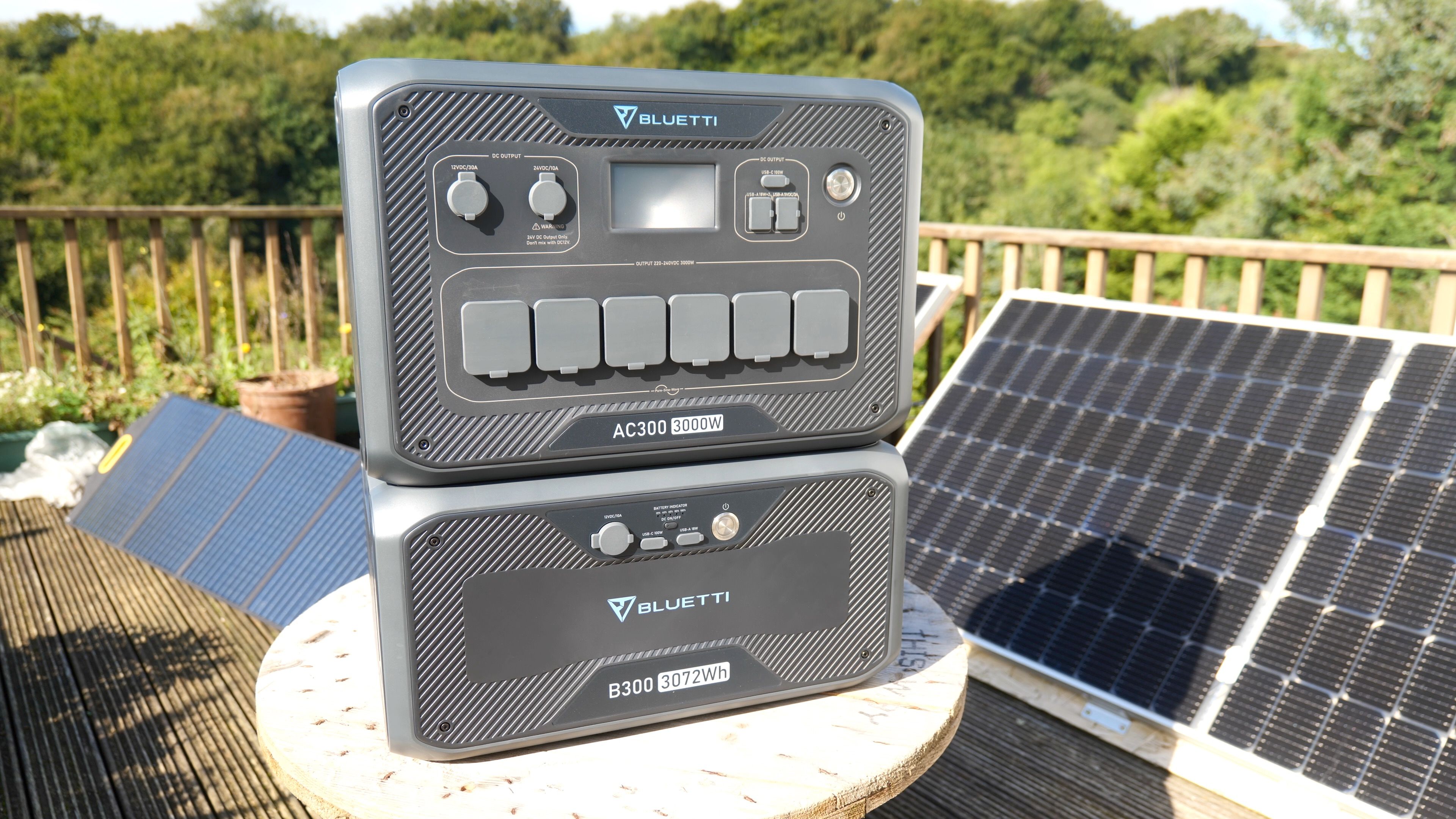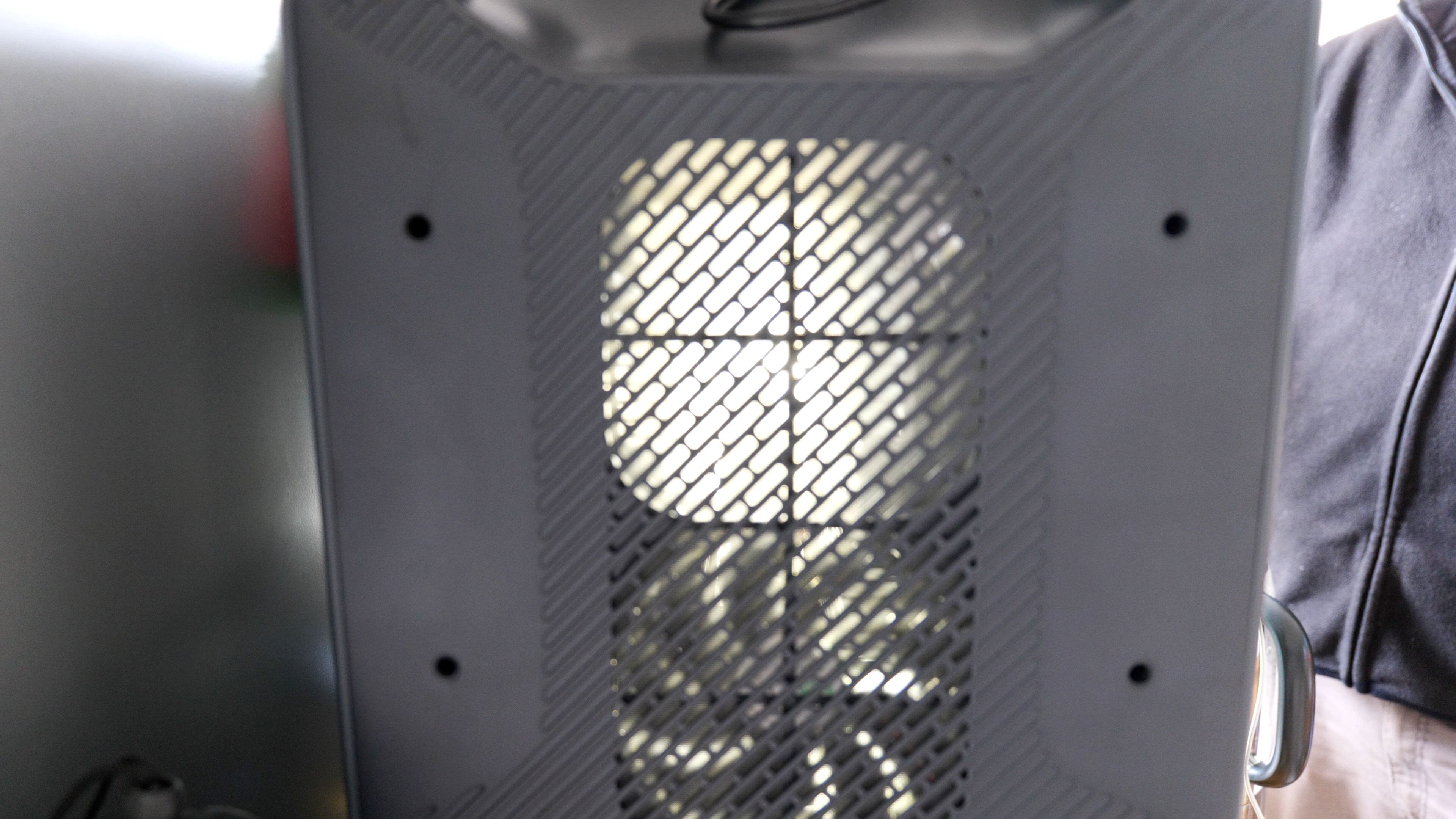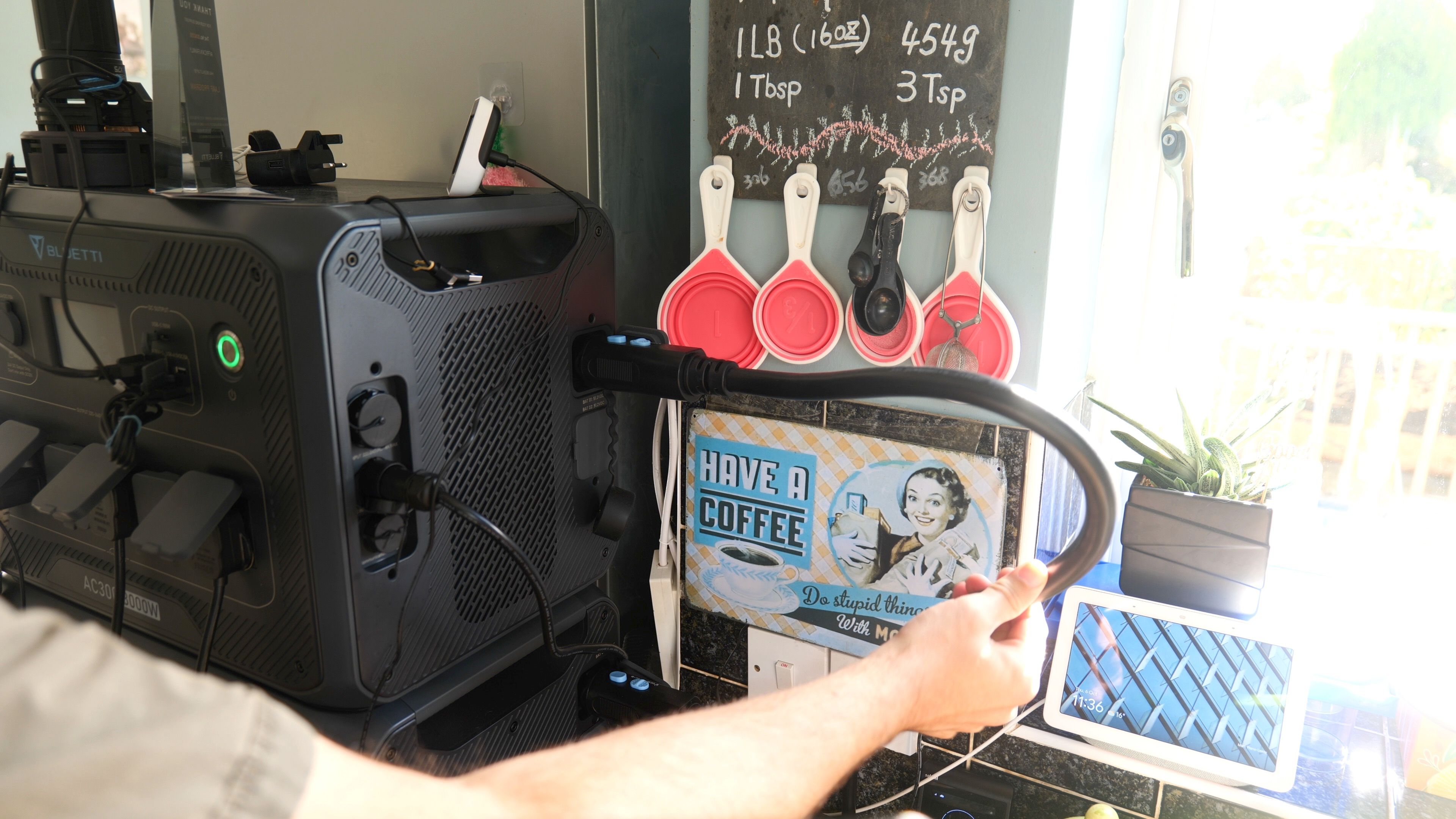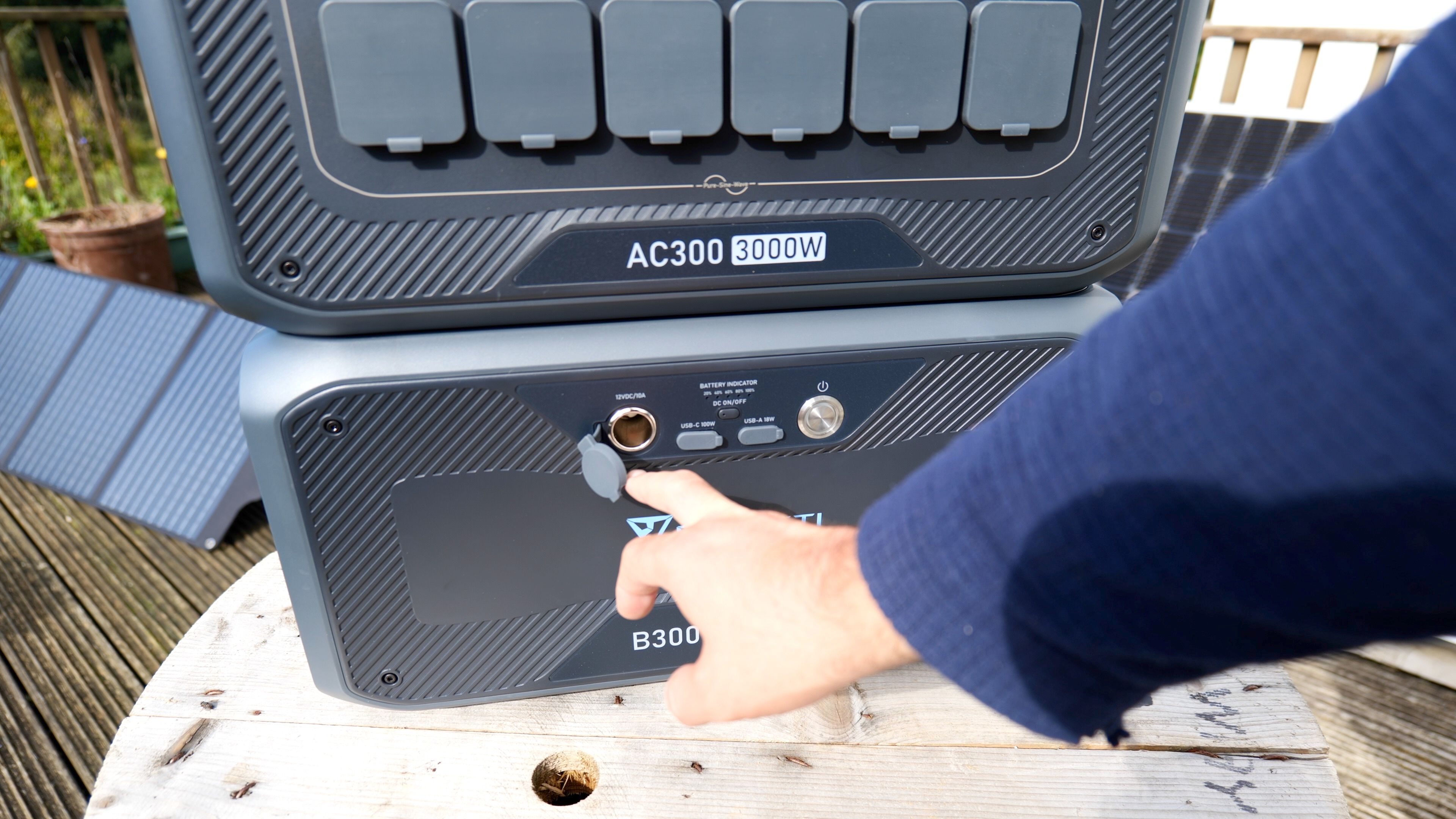Bluetti AC300 and B300
The bulky modular approaches stretches the definition of portable and requires two people to safely transport, but the Bluetti AC300 and B300 make up for it with such immense input and output capabilities. The modular, stackable design allows for easy upgrade and system scaling, while the two separate MPPT controllers allow up to 2400W of solar PV charging, or mixing different voltages, enabling you to fully maximise your charge rate. Best of all, it runs nearly silent, which is great for use in a home environment.
- Brand: Bluetti
- Weight: B300 is 36KG (80lbs), AC300 is 20KG (48lbs)
- Size: 52 x 32cm footprint; AC300 35cm tall; B300 27cm tall. Stackable.
- Capacity: 3100Wh, expandable to 12400Wh
- Maximum Discharge: 3000W continuous, 6000W surge
- Maximum Charge: 2400W from AC, 2400W from solar (two MPPT controllers); 3000W max when combined on a single battery
- Solar Controller: Two MPPT controllers
- Output: 6 x AC110/220V, 24V car port, 12V aviator, 2 x USB-C 100W PD, 2 x USB-A 5v2a, 2 x USB-A 18W Fast charge, 2 x 15W Qi chargers
- Lifecycles: 3500 to 80%
- Scalable system, with stackable modules
- Modular system allows you to repair or upgrade the inverter and batteries separately
- Two MPPT controllers running at 12-120V let you combine different solar systems to maximise charge rate
- 3000W output with 6000W surge is enough to power any household appliance
- Almost completely silent in normal use; great in a home environment
- Massive interconnect cable is ugly
- App is offers a bare minimum of features
- Nice, bright, large color screen - but it could do so much more
The Bluetti AC300 and it’s accompanying B300 battery has quickly become my favourite semi portable hybrid home battery backup solutions. With a modular, stackable approach, the Bluetti can scale to a whole home system, and separates out features for ease of repair or upgrade. It also features the highest potential solar input of any "portable" battery I've tested yet, with two MPPT controllers for a total of 2400W input. It's the best option on the market for hybrid portable backup battery right now, but does it suit your needs? Read on to find out.
Unboxing the AC300 and B300
I wouldn't normally address things like the delivery and unboxing, but in this case I thought it worth noting that delivery of this came on a pallet and is extraordinarily heavy. The packing note stated 100kg total (though that could have just been the delivery rating of "up to 100kg"). I'm lucky enough to live somewhere with a big driveway and garage to store boxes in, but if you have restricted delivery options or you live in an apartment, you might struggle to get this delivered successfully.
You'll also need two people to lift at least the B300 out of its box. At 35kg, it's not exactly lightweight anyway, but it's so securely packaged inside of triple layer heavy cardboard that the whole package is just too bulky to manouver with for one person. Even after getting the B300 and AC300 removed from the boxes, I found the remaining packagaing to be abnormally heavy. Of course, this results in an extremely safe delivery with no chance of damage to your purchase—but it's awkward, and you'll need space to store these enormous boxes in case of a warranty issue.
What's in the Box?
In the AC300 box, aside from the main unit, you'll find:
- AC charging cable (custom)
- Solar charging cable (custom, terminating in two sets of MC4 connectors)
- Car port to MC4 cable (enabling car charging to work over the solar cable)
- Nylon canvas bag
- "Light An African Family" souvenir glass ornament
- Manual
Then, in the separate B300 box, you'll find:
- Interconnect cable
- XT90 to MC4 solar charging cable
- Manual
If you're wondering about the heavy glass ornamnament, it's a small souvenir to thank you for supporting the Light an African Family program. Without wishing to get too political in a portable battery review, it's worth considering that there are up to 1.2 billion people living without access to power. Meanwhile, just 2000 or so individuals have a combined net worth of over ten trillion dollars. Part of your purchase pays for a small battery, two lights, and portable solar panel to charge it all, which Bluetti is hoping to provide for up to one million African families. While I could have done without a glass souvenir, it's an admirable program.
The Bluetti Modular Approach
Modular devices aren't always a good idea. We all know what happened to modular smartphones—or rather, didn't happen, because they never materialized or were quickly shelved because they turned out to be rubbish. But for a hybrid power backup system, it makes a lot of sense. It allows for easier repair, as well as upgrade or replacement when one part breaks. For instance, the newly announced AC500 with even bigger inverters is fully compatible with the B300 battery.
The Bluetti AC300 is the brains of the operation, housing the control screen, the massive inverters, charging circuits, and all the other clever bits. It can be combined with up to four B300 battery units out of the box (two directly, then another two daisy chained from those), or more when paired with another AC300 inverter. The AC300 cannot operate alone, since it doesn't have any power storage.
The B300 battery features the power storage cells—3100Wh of them, to be exact. These are Lithium Iron Phosphate (LiFePO4) cells, with a lifecycle of up to 3500 charges before degrading. This is above industry average (compared to Lithium Ion, which is typically only around 600 cycles). This doesn't mean that it stops working after 3500 cycles, merely that it degrades to around 80% of the original stated capacity. Unlike the AC300 inverter, the B300 can operate somewhat independantly, featuring up to 200W solar charging, a 12V car port, USB-C, and regular USB outputs. There's no AC output of course, but if the AC300 broke or you didn't have room to carry both units, you would still have some sort of backup power.
The AC300 and B300 stack neatly on top of each other (ideally with the AC300 on top, since it's the lightest), and it's clear that the design of the AC300 seems to have stemmed from the stackable element first and foremost, as there's a large amount of empty space in the middle. You might view this as wasted space, but I'm certain it helps with the airflow and cooling system, allowing the inverters to run almost silent most of the time—even with loads that would otherwise tax other large batteries. That's a huge plus point when used in the home environment.
Given such immense power and bulky units, they're only portable in the strictest definition, but certainly not something you're going to take camping or want to move around regularly. The AC300 is the lighter of the two devices, at around 20kg (48lbs), while the B300 weighs in at 36kg (80lbs). I struggled to safely lift the B300 on my own. Both feature carrying handles, but no wheels.
The only big downside to this kind of modular approach is that the separate modules need to connect in some way. In this case, using a 1-inch diameter massive interconnect cable. It's about three feet long, and while this might be neccassary to reach the bottom of two batteries if it were stacked, it is quite unsightly when you're just using the one battery, sticking miles out to the right side. When it's sat in your kitchen, this particular aspect is a bit ugly, and I would have appreciated a shorter one that could perhaps sit more flush with the case. Still, it's a relatively minor aesthetic gripe in the grander scheme of things.
Solar and AC Input Capabilities
Input is one area where the Bluetti AC300 really distinguishes itself, with up to 2400W AC charging, as well as 2400W total solar input, spread across two separate MPPT controllers (the charging cables splits into two MC4 tails). The input voltage for solar of 12—120V is both really high, allowing you to connect large static panels; and really low, allowing for smaller, portable panels to be used. And because there's two controllers, you can mix and match two different chains, with up 1200W on each controller. This really enables you to maximise your sun harvest, which is critical in low-light environments.
However, you can't exceed 3000W combined from all the charging methods when connected to a single B300 battery. With two batteries connected, this increases to 5400W.
As mentioned, the B300 battery unit also has a small amount of solar input potential on its own—up to 200W, at 12-60V. It'll do in a pinch if you lose access to the AC300, and will work with most portable panels.
Output
The AC300 inverter is equally impressive when it comes to output, able to power any regular household appliance with up to 3kW continuous output and a 6kW surge capability. Specifically, it can handle up to 3750W for 2 minutes, 3650W-4500W for 5 seconds, and a brief 500ms if you're drawing over 4500W. We've been using it for a few weeks to boil water and cook on daily, with a 2.8kW kettle and 2kW induction hob, and not had any problems yet. You can't run more than one large appliance at once, but you shouldn't come across any appliance by itself that can't run. It can even charge my car if I'm desperate. And if you happen to overload the inverter, it's easy enough to dismiss the alarm and turn the AC back on.
I'll also take a moment to appreciate again that in daily, the AC300 is virtually silent. Ocassionaly you'll hear a slight whir, but only if you listen really closely. It's clear that the added bulk of this inverter allows the whole thing to run cooler and more efficiently. You'll hear the fans kick in once you have a full 2.4kW of constant charge going in, but even then, it's not so loud as to be obstructive. You can certainly buy more convenient and portable all-in-one batteries with the same capacity as the B300 and roughly the same output as the AC300, but the moment they go above a few hundred watts of input or output, it sounds like a jet engine.
In terms of connectivity, the Bluetti AC300 features:
- 6 x 220V 20A sockets on our UK model, though the US model features six smaller 20A 110V sockets, and one larger 30A socket. For US users, you can combine two AC300 units if you need 220V output.
- 24V 10A car port (note the voltage; don't mistakenly plug in regular 12V car appliances to this socket)
- 12V 30A aviator plug socket
- 2 x 100W USB-C PD
- 2 X USB-A 5V 2A
- 2 x USB-A 18W Fast Charge
- 2 x 15W Wireless Qi Chargers
That's an extensive number of ports, and each one is covered by it's own rubber protector.
The AC300 outputs are controlled from the touchscreen; simply tap on the DC output or AC output to turn them on or off (you can also use the smartphone app). I particularly like the inclusion of the two wireless chargers. If you just need to charge your phone, you needn't keep a mass of tangled cables dangling down.
Further, the B300 battery unit features additional, separate outputs:
- 12V car port
- USB-C 100W PD
- USB-A 18W Fast Charge
These are controlled via a single physical switch on the front of the B300, and can't be activated from the AC300 (and vice versa—the switch on the B300 doesn't affect the AC300 ports).
The LCD Screen and App
The Bluetti AC300 features a large, full-color, bright LCD touchscreen. It's responsive, easy to read, and beautiful. Which is why it's especially frutrating that it's kind of a wasted opportunity here.
The main screen displays an aggregate solar input, AC input, DC output and AC output, as well as battery percentage remaining. Curiously, it doesn't try to estimate remaining battery time. In truth, estimated time remaining on other batteries is only ever that—at best, a very rough estimate. Yet it's accurate enough when drawing a constant load to be of some utility, so the absence is noted here. Two quick access buttons on the homescreen allow you to easily disable and enable DC and AC output. The basics are certainly all present and accounted for.
From there, you have a selection of menus on the left hand side to delve deeper. This includes a breakdown of each MPPT controller voltage and current, as well as battery status if you have more than one connected. There's a few configuration options too, such as combining the two MC4 tails into one parallel connection, or setting one to bypass the MPPT if it's not solar (for instance, coming from your car port, or a wind turbine).
But I feel like there could have been so much more here. As a quick example: graphing. Such a big and gorgeous display, yet no way to view a graph of the solar input over the day? The config options are also fairly shallow, with no time of day settings for AC charging if you have cheap overnight rates, such as the Tesla Powerwall offers.

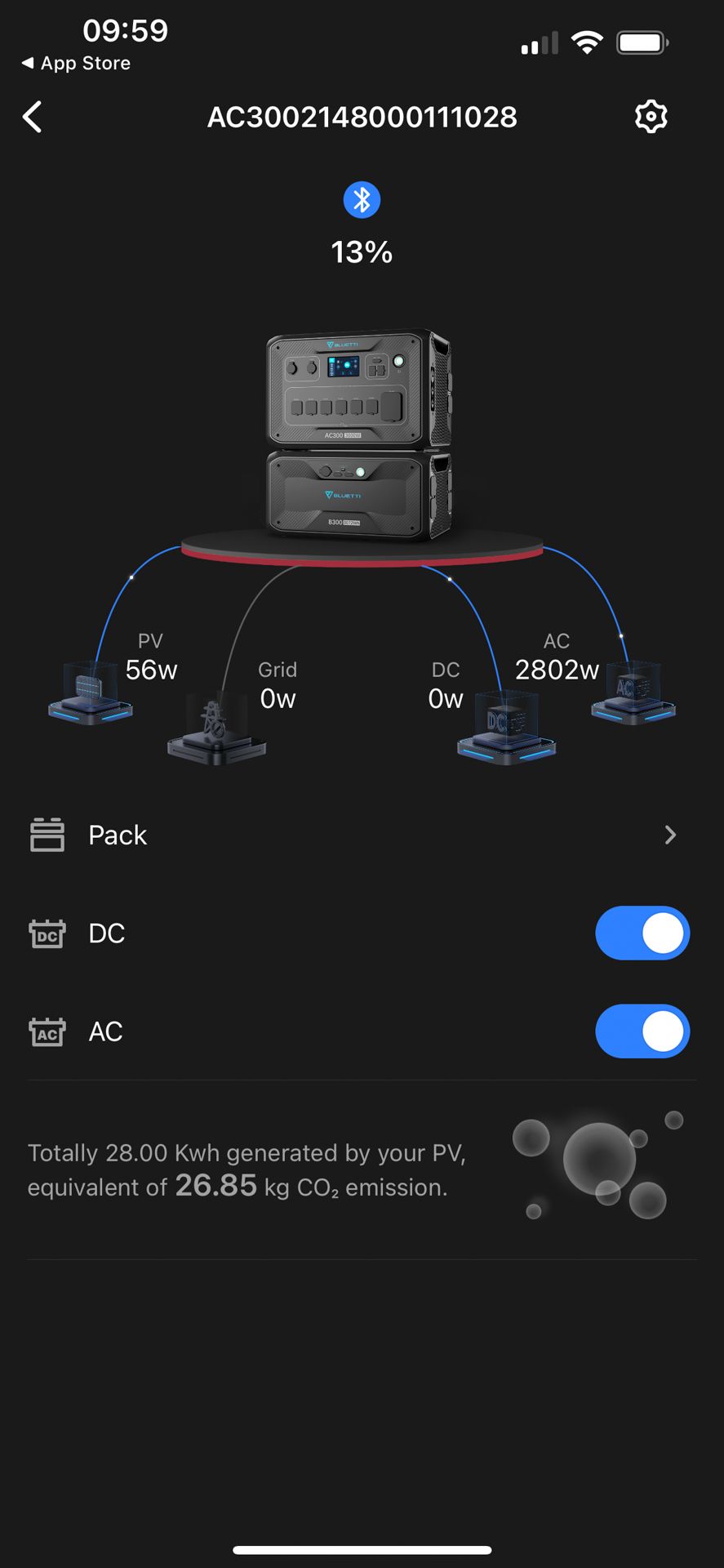
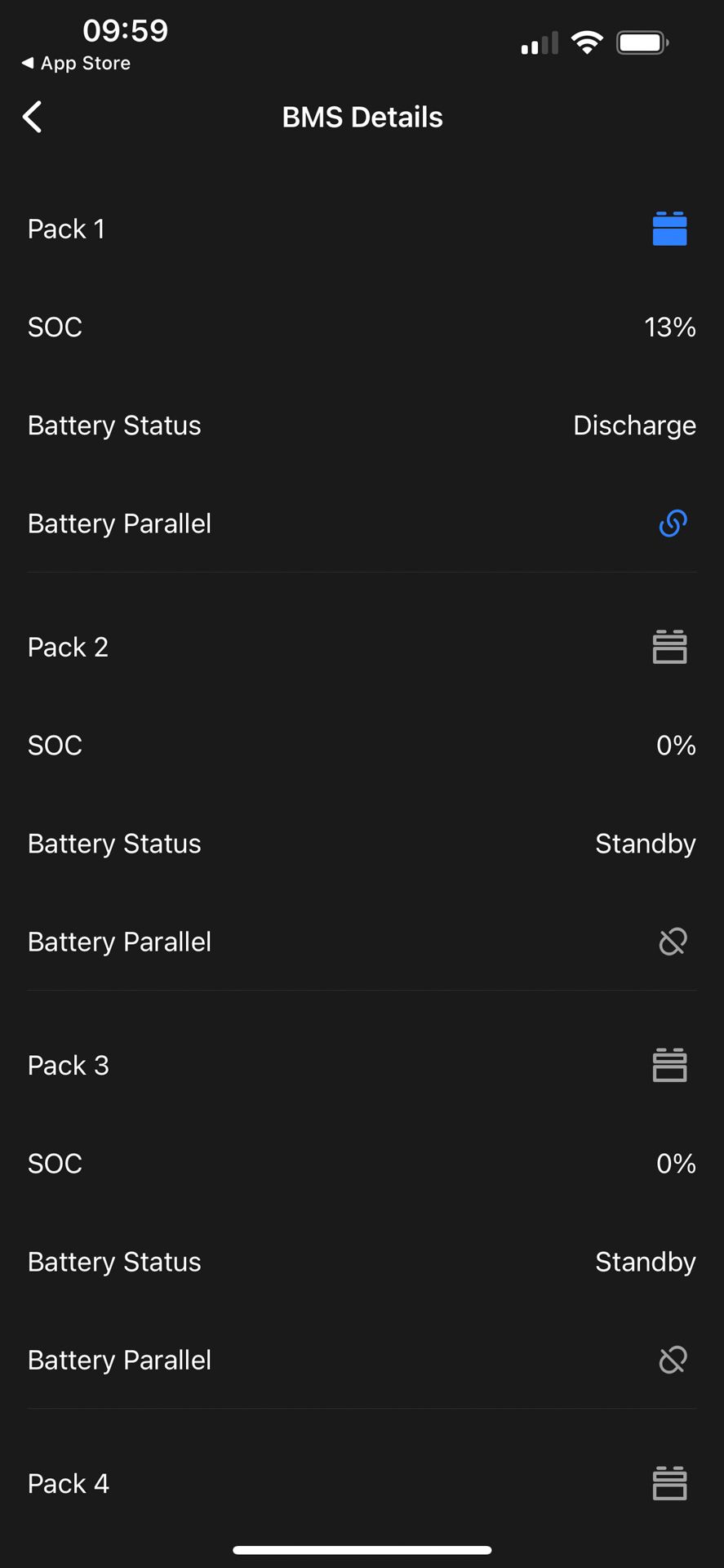
Bluetti also offers an app, which connects over Wi-Fi or Bluetooth, however, the app offers less configuration options and information than the on-device display, giving you the same aggregate output and input, plus AC and DC on/off controls. The one saving grace is that you can skip past account creation if you just want to use local Bluetooth connectivity, but realistically, I'm not sure why you'd use the app when you're standing within five meters of the AC300 anyway. You're probably safe to skip the app unless you need basic remote control and monitoring features, in which case the app offers the bare minimum of what you'll need after creating an account (which is more than can be said for some manufacturers).
Is This the Best "Portable" Battery Backup Yet?
At $3,699.00 for the AC300 and one B300 battery bundle, it works out at about $1.20 per Watt-hour, which is a little above average. But the two MPPT solar charge controllers and high AC charge rate justify that, and as usual, if you buy additional batteries at the same time that prices comes down to $1/Wh or less. With LiFePO4 battery cells, you're also looking a long product life of around ten years (or 3500 cycles) of daily use before you'd need to think about replacement. That's great value for money.
This inverter is powerful enough to handle any appliance, and the whole thing can be scaled to power a whole house with more batteries—though at that point, it would be more cost effective to buy a permanent house install such as the Tesla Powerwall, so do consider if you actually need to transport the battery. If you do need to carry the Bluetti system, make sure you've got someone else to help you.
I really like the modular approach Bluetti have taken here. While it does result in some wasted space and a bulkier product than you’d be getting from an all-in-one battery backup, being able to swap out and replace or upgrade the separate parts is very much welcome in this age of disposable gagdets.
For most needs, the Bluetti AC300 and B300 battery is the best hybrid power station yet. But if you need something significantly smaller, and more easily portable by one person, it won't be for you.

